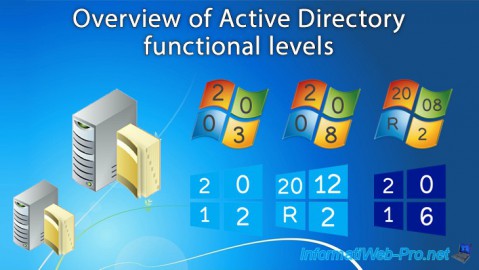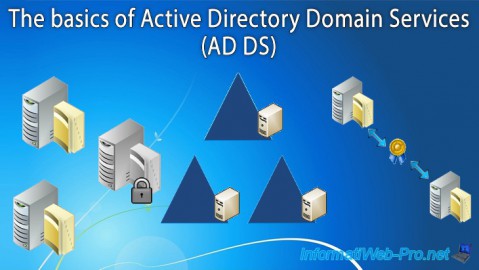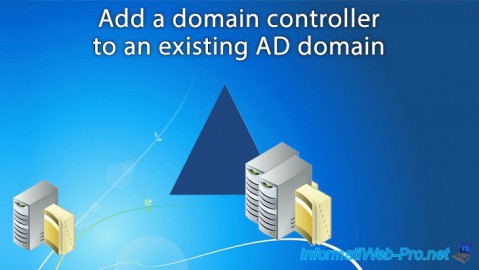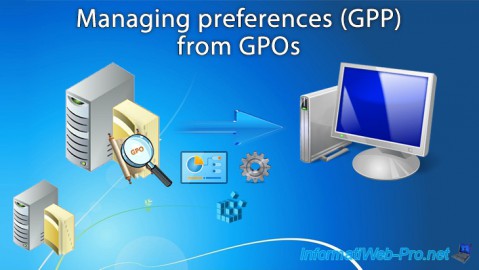- Windows Server
- 01 October 2021 at 11:34 UTC
-

- 1/2
Thanks to group policies, you can define many policies, but also preferences for computer configuration and user configuration. These preferences are also called GPPs for : Group Policy Preferences.
The main difference being that :
- when you apply policies, the settings or related options on the client PC can no longer be changed by the user
- on the other hand, when you apply preferences, the settings or related options will be configured on the client PC, but users can change these preferences if they wish and they have the necessary rights to do so.
In this tutorial, we will quickly show you what preferences can be set for computer and user through Group Policies.

1. Available actions
For each type of preference, you can choose an action :
- Create : this action creates the desired element if it doesn't exist.
- Replace : this action allows you to delete the existing element (if applicable) and create a new one instead. (rarely used action)
- Update : this action creates the desired item or updates it if it already exists. (the most used action)
- Delete : this action allows you to delete the existing element. Which is handy, because what is created via preferences is not automatically deleted. Removing a preference doesn't delete what it created on the client PC. You must therefore use the "Delete" action to delete what had been created previously via this preference.
2. Computer preferences
2.1. Create an environment variable
Using preferences, you will be able to create and/or update environment variables on the client computer.
To do this, select "Environment" in the left list and right click "New -> Environment variable" in the right part.

Select the desired action (usually : update), as explained at the start of the tutorial.
Then, in the case of environment variables, you will have the option to create, replace, update or delete custom environment variables on the client PC.
But, you can also edit the "PATH" environment variable which contains many paths to different system folders.

2.2. Create a file
Using preferences, you will be able to create, update or delete files on the client computer.
To do this, select "Files" in the list on the left and right click "New -> File" in the right part.

As you will quickly understand, you can create a file on the computer from an existing file accessible via the network.
In this case, we created a shared folder named "shared_data" on our domain controller and created an "app-config.ini" file there.
Then, on the client PC, the file "\\DC\shared_data\app-config.ini" (accessible via the network) will be copied to its local folder "C:\Program Files (x86)\My App\app-config.ini".

2.3. Create a folder
You can also create folders on the client computer.
To do this, select "Folders" in the list on the left and right click "New -> Folder" in the right part.

To create a new folder, specify its path to create the corresponding tree structure on the client PC.

2.4. Create an ini file
In the "Ini Files" section, you can create ".ini" files.

To create a new ".ini" file, you must specify :
- the name of the section
- the name of the property
- and the value of the property

2.5. Create a registry key
To create, update or delete a new registry key, go to the "Registry" section and right click "New -> Registry Item".

In registry properties, you can :
- select a hive : HKEY_LOCAL_MACHINE, HKEY_CURRENT_USER, ...
- select the path of the desired key
- specify the name of the value or use the automatic name "(Default)"
- select the type of data : REG_SZ, REG_DWORD, REG_QWORD, ...
- specify the desired value

If the key to be created on the computer also exists on your server, you can click on the "..." button in the "Key Path" line.

You will be able to browse the registry of your server and select the data in the desired key.

This will automatically fill in all the required fields correctly.

Share this tutorial
To see also
-

Windows Server 4/16/2021
Windows Server - AD DS - How Active Directory replication works
-

Windows Server 4/30/2021
Windows Server - AD DS - Overview of Active Directory functional levels
-

Windows Server 4/3/2021
Windows Server - AD DS - The basics of Active Directory
-

Windows Server 5/21/2021
WS 2016 - AD DS - Add a domain controller to an existing AD domain


You must be logged in to post a comment